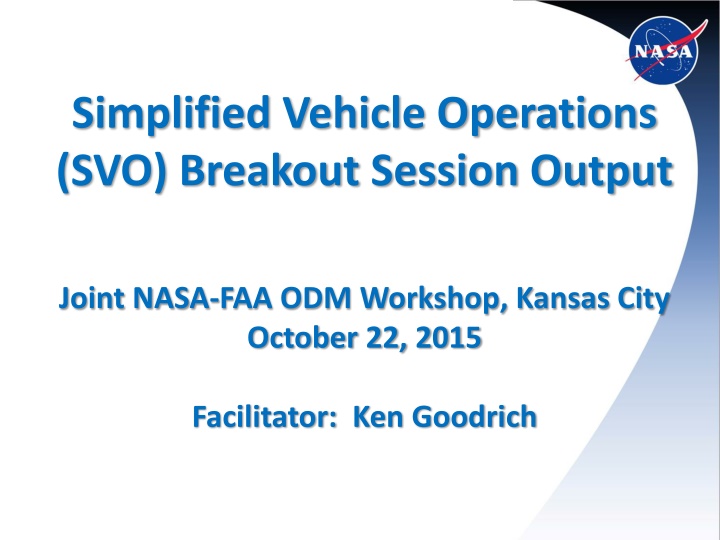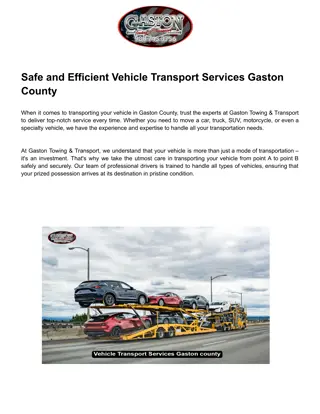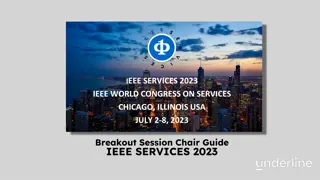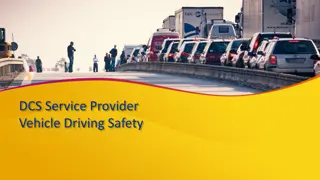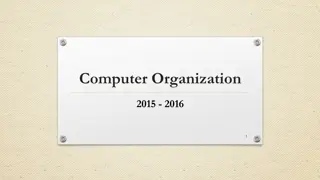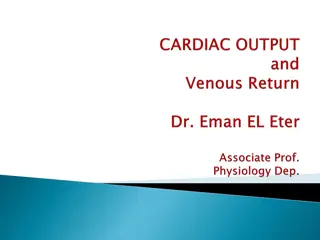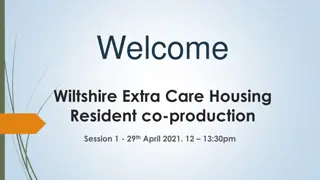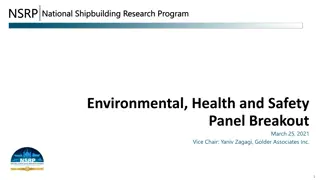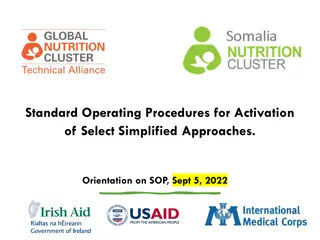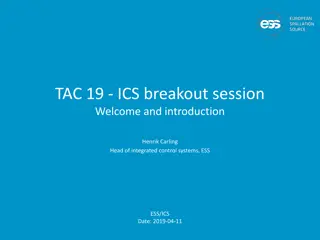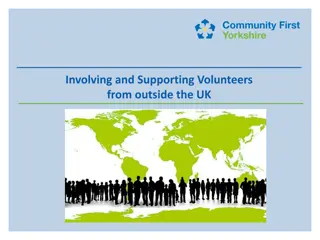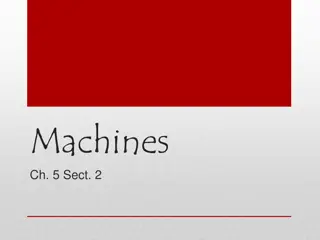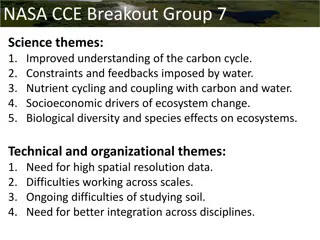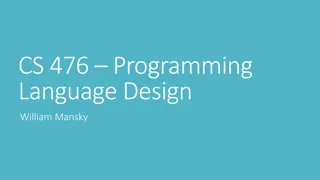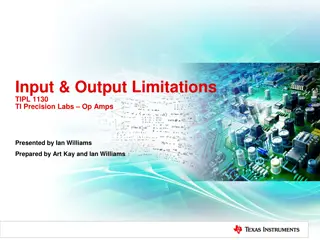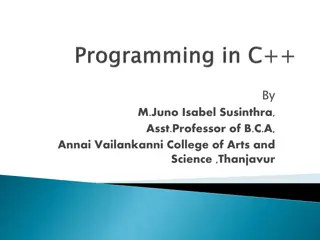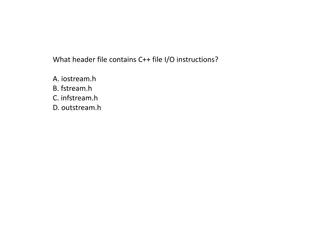Simplified Vehicle Operations Breakout Session Output
Strong agreement on achieving on-demand aviation with little user training. Safety responsibilities distributed between automation, ground systems, and humans. Two paths suggested: direct focus or evolutionary steps, with challenges in training and market growth. Enabling technologies discussed for future operations including digital airspace and resilient flight control systems.
Download Presentation

Please find below an Image/Link to download the presentation.
The content on the website is provided AS IS for your information and personal use only. It may not be sold, licensed, or shared on other websites without obtaining consent from the author.If you encounter any issues during the download, it is possible that the publisher has removed the file from their server.
You are allowed to download the files provided on this website for personal or commercial use, subject to the condition that they are used lawfully. All files are the property of their respective owners.
The content on the website is provided AS IS for your information and personal use only. It may not be sold, licensed, or shared on other websites without obtaining consent from the author.
E N D
Presentation Transcript
Simplified Vehicle Operations (SVO) Breakout Session Output Joint NASA-FAA ODM Workshop, Kansas City October 22, 2015 Facilitator: Ken Goodrich
SVO Goal Strong agreement that end-state goal is achieving on-demand aviation requiring little to no user training User specifies trip goals and constraints, and system executes User has no responsibility for safety of flight Command and safety responsibilities distributed (TBD) between on-board automation, ground systems, and any remote humans Referred to as end state, fully-automated ODM even though significant, off-board human expertise or remote piloting maybe needed or desired in some situations Near even spilt on how best to achieve this end-state: ~40% support direct focus on end objective without intermediate step Revolutionary goal requires full commitment Even modest training burdens a significant barrier to wide use of ODM Capacity of lightly trained operators to contribute to, let alone be responsible for safety of flight, is unknown and questionable Industry can incrementally introduce technologies along the way ~60% prefer evolutionary path with 1 or 2 intermediate steps Direct path requires unprecedented leap beyond current SOA that s unlikely for complex safety-critical, highly regulated system Timeline of direct path very uncertain and likely long (e.g. 20+ years taken so far to develop sense and avoid standards for UAS) Significant airspace technology, accommodation, and public investment needed to enable end-state capability and these are unlikely for new and highly speculative class of vehicles and operations Significant market growth possible without waiting for full automation, e.g. increase student pilot completion rate from ~20% (current) to >90% while providing low-time pilots safe, reliable transportation capability 10/7/2024 2
SVO enabling technologies, independent of path (1/2) Digital, high volume airspace Current, voice based ATC significant challenge to ease-of-use and safety Slow, error prone, high-pilot workload, specialized training and proficiency End-state SVO requires high-capacity datalinks between airspace and automation Path should be compatible with end-state automation and much higher volume ODA operations while providing near-term benefit to current operations Future small aircraft traffic much higher v0lume (10-100x current) and highly-distributed (e.g. runway independent) Leverage & accelerate NextGen datacomm capabilities for GA NOTE: Airspace elevated to independent working group (e.g. groups are Electric Propulsion, SVO, Airspace, & Manufacturing) Resilient, augmented flight control Needed whether PIC is on-board, on ground, or supplanted by automation Support direct command of flight-path and other relevant parameters (e.g. attitude during flare) Full-time availability, fail-operational & affordability presents significant challenge Graceful failure management, maintains basic response type (pilot no longer trained to mitigate unfamiliar revision modes) 10/7/2024 3
SVO enabling technologies, independent of path (2/2) Integrated Vehicle Health Management Highly automated management of aircraft systems Graceful failure management, resulting vehicle capabilities and mission-level impacts communicated to other agents. Autonomous self-preservation and maneuvering Needed whether PIC is on-board, on ground, or supplanted by automation Nominal notifies, informs other agents of developing hazards with sufficient time to consulate, and implement joint mitigation using routine maneuvers, measures, and authority May act autonomously if imminent threat precludes coordination or coordination unsatisfactory (e.g. human authority unavailable or impaired). Ultimate authority delegation considering expertise, connectivity, consequences is key research question. End-state requires significant integration between machine perception and control (e.g. machine vision-based control & hazard monitoring for auto takeoff, landing) Includes safety back-ups such as whole-aircraft parachute and/or autonomous-landing capability Autonomous decision aids for flight and contingency planning Longer time-horizon than self-preservation capability: through mission completion and planning for expected contingencies (e.g. alternates, nearest precautionary landing, emergency descent/landing, etc.) Coverage includes nominal and foreseeable, non-normal situations. Doesn t nominally affect active flight plane without interacting with agent in command 10/7/2024 4
Path dependent technologies (direct vs stepwise) Human interaction and interfaces Support for candidate architectures including 1) on-board user, 2) on-board, but lightly trained pilot, 3) remote, professional pilot on-call or during critical phases, 4) remote, professional dispatcher, 5) no safety-critical human intervention required Architectures require effective CRM-based (crew-resource management) bi-directional communication. Due to limited on-board operator experience or multi-tasking (i.e. handling multiple flights) and remoteness by expert support personal, the automation must be self-monitoring of mission status and safety and be able to consult with and inform human agents efficiently and appropriately Remote humans may not respond instantaneously and may not immediately understand flight history/situation. Requires effective briefing by automation to minimize delay, misunderstanding Remote expert operators may need option to exercise relatively low-level control of the vehicles actions. On-board, but less experienced human agents, need information presented in an understandable form summarizing mission level impacts of decisions they make (e.g. trades between time and comfort of flight), mission completion risks, and safety of flight limitations (e.g. no-fly zones due to hazardous weather) Less experience agents need ability to query automation for reassurance and/or to redirect flight to avoid & exit areas exceeding personal thresholds for comfort and perceived safety. 10/7/2024 5
Next Steps for SVO Working Group Review, adjust proposed technology areas Flesh-out CONOPS for candidate architectures End-state: roles of vehicle automation, ground automation, any remote humans. Intermediate steps along incremental path Consider full-flight requirements, including planning, preflight inspection, and loading to assess required human expertise and automation capabilities Identify key technology approaches and sub-technologies Use CONOPS and top-level, performance metrics to assess impacts of candidate approaches Identify gaps relative to current state of practice and art For top priority approaches, identify key pre-competitive activities, products Proof of concept evaluations & demonstration Design tools, handbooks System standards Certification methods 10/7/2024 6
